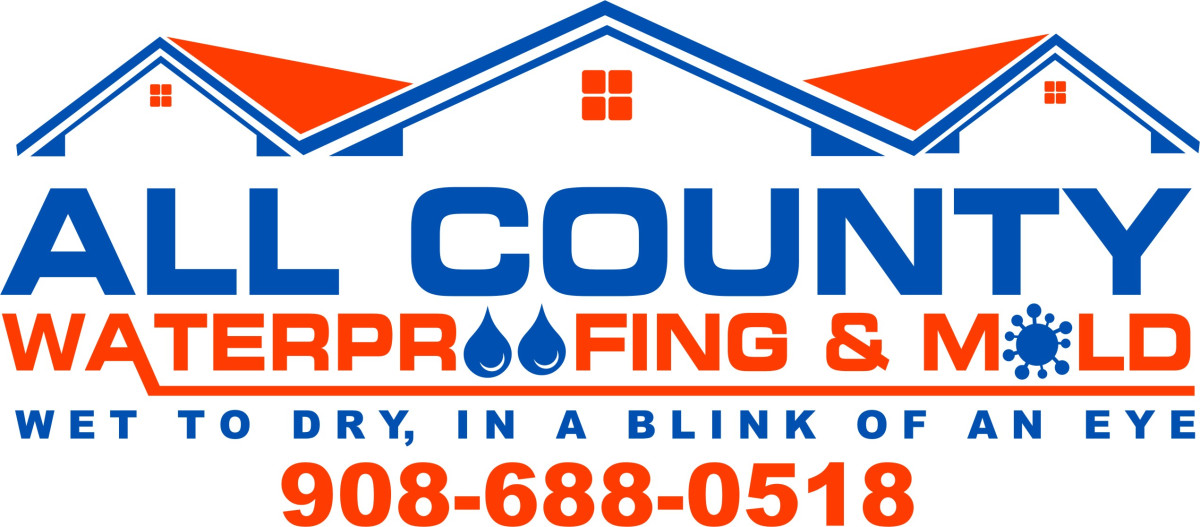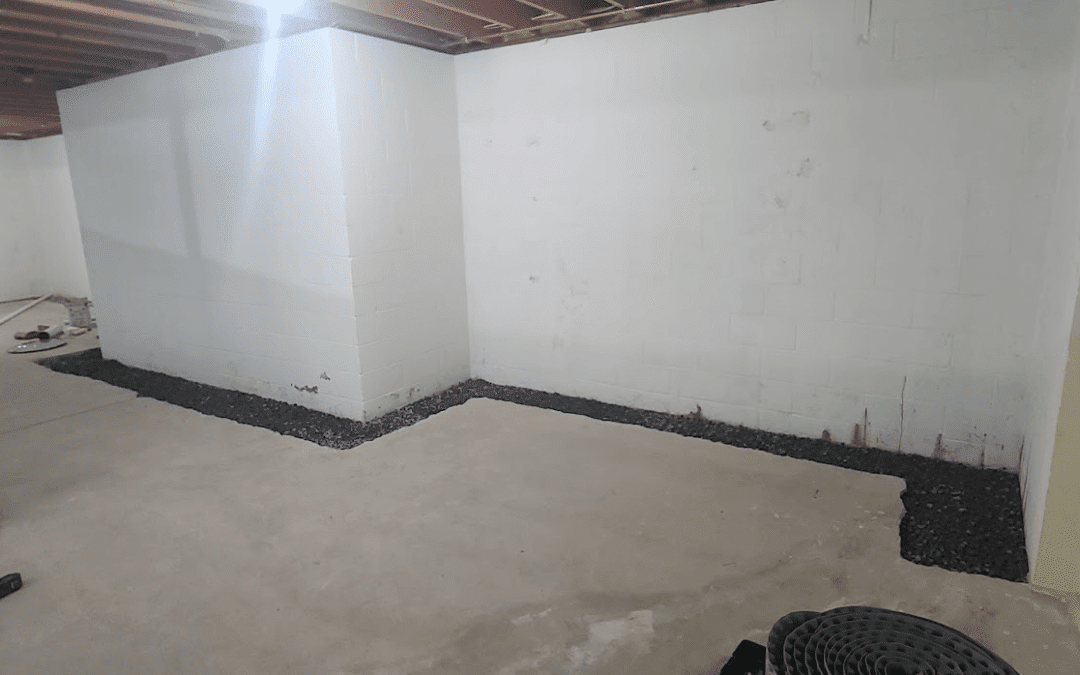Comprehensive Guide to Waterproofing Your Basement: Protecting Your Home from Water Damage
Cranford, United States - September 30, 2024 / All County Waterproofing /
Waterproofing a basement is not a task to be taken lightly, as improper waterproofing can lead to costly repairs, mold growth, and even structural damage. Professional contractors use advanced waterproofing methods to ensure that basements remain dry, safe, and functional, regardless of weather conditions or soil composition.
In this article, we’ll delve into the professional methods used for basement waterproofing, discussing both exterior and interior solutions, crack repair techniques, and moisture control methods to ensure long-lasting results.
1. Exterior Waterproofing Solutions for Maximum Protection
Exterior waterproofing focuses on keeping water away from the foundation and preventing it from entering the basement. These methods are particularly important for homes in areas with heavy rainfall or high water tables, as they address water management at its source.
a) Excavation and Membrane Installation
One of the most comprehensive exterior waterproofing solutions involves excavating around the foundation to expose the walls and applying a waterproof membrane. This membrane, made of rubberized asphalt or a similar material, acts as a barrier that blocks water from penetrating the foundation.
This method of excavation and membrane installation is highly effective because it addresses the problem from the outside, where water pressure is most significant. Once the membrane is applied, contractors often install a drainage board over the membrane to channel any water downwards into an external drainage system. The excavation is then filled back in, ensuring that the foundation is protected by a durable, long-lasting waterproof layer. This method requires professional expertise and is often recommended for homes with severe water infiltration issues or those in flood-prone areas.
b) Exterior French Drain Systems
Exterior French drains, also known as weeping tiles, are another professional method used to manage groundwater around a home. This system involves placing a perforated pipe in a trench that runs along the perimeter of the foundation. The trench is then filled with gravel to allow water to flow easily into the pipe, which directs the water away from the home and into a safe discharge area, such as a dry well or a storm drain.

The main advantage of an exterior French drain system is that it prevents groundwater from building up against the foundation, reducing hydrostatic pressure and lowering the risk of water seepage into the basement. These systems are highly effective in regions with heavy rainfall or homes with high water tables, as they manage large amounts of water before it has a chance to enter the basement.
c) Gutter and Downspout Extensions
A simple yet effective measure that complements other exterior waterproofing techniques is ensuring that gutters and downspouts are functioning properly. Professional waterproofing contractors often install gutter extensions to make sure rainwater is directed at least 5-10 feet away from the foundation. Properly designed gutters and downspouts, combined with extensions, can greatly reduce the amount of water pooling around the foundation, which in turn lowers the risk of seepage into the basement.
2. Interior Basement Waterproofing Solutions
While exterior methods focus on preventing water from reaching the foundation, interior basement waterproofing techniques are designed to manage water that has already entered the home. These solutions are especially useful when external waterproofing is not feasible or when additional protection is needed to complement exterior systems.
a) Interior French Drain Systems
Interior French drains are among the most popular interior waterproofing methods. Similar to exterior French drains, they consist of a perforated pipe that is installed along the perimeter of the basement floor, just below the surface. This pipe collects water that seeps in through walls or the floor and channels it to a sump pump, which then removes the water from the basement.
The installation process involves breaking up a section of the basement floor to create a trench where the drain pipe is placed. The trench is then covered with gravel and concrete, creating a discreet and highly effective drainage system. Interior French drains are often used in combination with sump pumps to provide comprehensive water management.
b) Sump Pump Systems
Sump pumps are essential for any interior drainage system, especially in homes that experience frequent basement flooding or water infiltration. A sump pump is installed in a sump pit, which collects water from the interior French drain or directly from the floor. When the water in the pit reaches a certain level, the sump pump automatically activates and pumps the water outside, away from the foundation.
There are two types of sump pumps commonly used by professionals: pedestal sump pumps and submersible sump pumps. Pedestal pumps have the motor located above the sump pit, making them easier to access for maintenance, while submersible pumps are placed inside the pit and are generally quieter. Professional contractors often recommend sump pumps with battery backup systems to ensure they continue operating during power outages, which often occur during heavy storms.
c) Waterproofing Paint and Sealants
While waterproofing paints and sealants are often viewed as temporary solutions, they can still be effective when used as part of a larger waterproofing strategy. These products are typically applied to basement walls and floors to create a moisture-resistant barrier, helping to prevent water vapor from entering the basement.
Cementitious waterproofing coatings, for example, are applied like paint but bond with the concrete to create a solid, impermeable surface. These coatings are particularly effective at sealing small cracks and pores, offering an additional layer of protection against moisture. However, it’s important to note that waterproofing paints and sealants are best used in conjunction with other methods, as they are not sufficient to address significant water infiltration on their own.
3. Professional Crack Repair Techniques
Cracks in foundation walls and floors are one of the most common sources of basement water infiltration. Professional crack repair is essential for ensuring that these entry points are properly sealed, preventing further damage and water leakage.
a) Epoxy and Polyurethane Injection
Epoxy and polyurethane injection are two of the most reliable methods for sealing cracks in basement walls and floors. This technique involves injecting a liquid epoxy or polyurethane into the crack, which then expands to fill the gap and create a watertight seal.

Epoxy injections are often used for structural repairs, as the material hardens to provide additional strength to the foundation. Polyurethane injections, on the other hand, remain flexible, making them ideal for sealing cracks that may experience movement due to soil expansion and contraction. Polyurethane is particularly effective for dealing with small hairline cracks and minor water infiltration.
b) Hydraulic Cement for Larger Cracks
For larger cracks, hydraulic cement is a preferred option. Hydraulic cement expands as it sets, creating a strong, durable seal that prevents water from entering the basement. This material is especially useful for sealing cracks around pipes or other penetrations in the foundation. It sets quickly and provides a long-lasting solution for larger cracks and leaks.
4. Moisture and Humidity Control in the Basement
In addition to preventing water infiltration, controlling moisture and humidity levels in the basement is essential for maintaining a dry, healthy environment. High humidity can lead to mold growth, musty odors, and damage to furniture and belongings, even if there is no visible water leakage.
a) Dehumidifiers
A professional-grade dehumidifier is an effective way to reduce humidity levels in the basement. These devices remove excess moisture from the air, creating a more comfortable and dry environment. Dehumidifiers are particularly useful in basements with poor ventilation or those prone to dampness. For optimal results, a dehumidifier should be capable of maintaining humidity levels below 60%, as this is the threshold at which mold growth can begin.
b) Vapor Barriers
Vapor barriers are another method used to control moisture in the basement. These barriers are typically made of heavy-duty plastic or similar materials and are installed on the walls and floors of the basement to block moisture from seeping into the living space. Vapor barriers are particularly effective in unfinished basements or crawlspaces, where dampness is a common issue.
By preventing water vapor from entering the basement, vapor barriers reduce the overall moisture level, helping to prevent mold growth and creating a more comfortable environment. These barriers are often installed in conjunction with interior waterproofing systems for comprehensive moisture control.
5. Long-Term Maintenance for Basement Waterproofing Systems
Once a basement has been professionally waterproofed, regular maintenance is necessary to ensure the longevity of the system. This includes:
- Inspecting for New Cracks: Regular inspections of the basement walls and floor can help catch new cracks early, allowing them to be sealed before they become major issues.
- Checking the Sump Pump: Sump pumps should be tested periodically to ensure they are functioning correctly. Many professionals recommend performing a test at least once a year to ensure the pump activates and discharges water properly.
- Gutter and Downspout Maintenance: Keeping gutters and downspouts free of debris helps prevent water from pooling around the foundation. Regular cleaning and ensuring that downspout extensions are directing water far enough away from the house are simple but important steps in maintaining a dry basement.
Professional basement waterproofing is a comprehensive process that involves a combination of exterior and interior solutions, crack repair, and moisture control techniques. By employing advanced waterproofing methods, professionals ensure that basements remain dry, structurally sound, and free from the harmful effects of water infiltration.
From installing French drains and sump pumps to applying waterproof membranes and crack repair techniques, these methods provide long-term protection for homeowners, safeguarding their property from water damage and mold growth. With proper maintenance and professional care, a waterproofed basement can remain a dry, secure space for years to come.
Contact the Professionals at All County Waterproofing Today! 908-688-0518

Contact Information:
All County Waterproofing
123 N Union Ave Suite 107
Cranford, NJ 07016
United States
Robert Praizner
(908) 688-0518
https://allcountywaterproofing.com/
Original Source: https://allcountywaterproofing.com/media-room/


